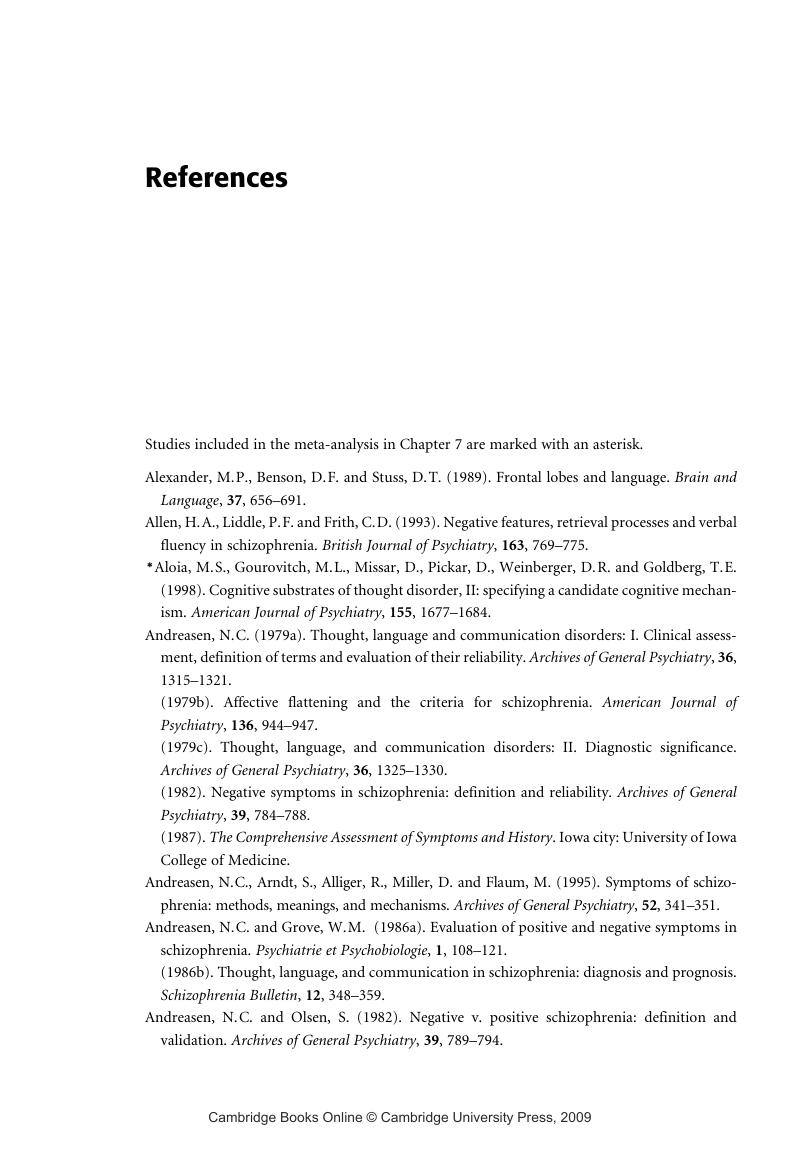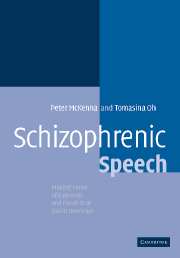Book contents
- Frontmatter
- Contents
- Preface
- 1 Describing schizophrenic speech
- 2 Thought disorder as a syndrome in schizophrenia
- 3 The differential diagnosis of thought disorder
- 4 Thought disorder as a form of dysphasia
- 5 Thought disorder and communicative competence
- 6 Thought disorder as a dysexecutive phenomenon
- 7 The dyssemantic hypothesis of thought disorder
- 8 Some conclusions and a few speculations
- References
- Index
- References
References
Published online by Cambridge University Press: 19 August 2009
- Frontmatter
- Contents
- Preface
- 1 Describing schizophrenic speech
- 2 Thought disorder as a syndrome in schizophrenia
- 3 The differential diagnosis of thought disorder
- 4 Thought disorder as a form of dysphasia
- 5 Thought disorder and communicative competence
- 6 Thought disorder as a dysexecutive phenomenon
- 7 The dyssemantic hypothesis of thought disorder
- 8 Some conclusions and a few speculations
- References
- Index
- References
Summary

- Type
- Chapter
- Information
- Schizophrenic SpeechMaking Sense of Bathroots and Ponds that Fall in Doorways, pp. 186 - 206Publisher: Cambridge University PressPrint publication year: 2005



